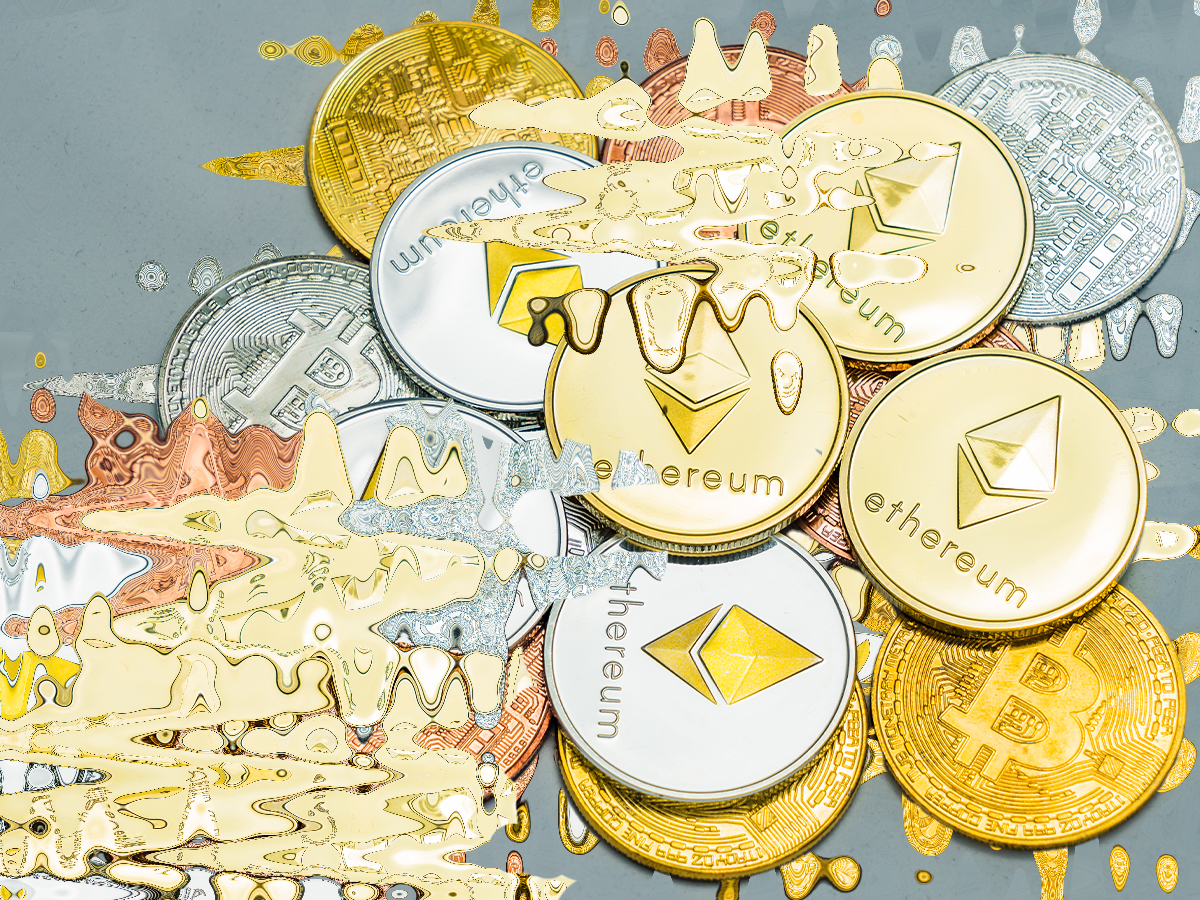Cryptocurrency and the layers of blockchain technology it’s built upon can prove to be a fairly difficult topic to wrap your head around.
As it stands today, the world of cryptocurrency remains shrouded in over-complicated technical jargon and a cult-like following of enthusiasts that unrelentingly endorse crypto as the future of all modern finance. Meanwhile, there are hordes of financial experts on the other side of the fence that denounce cryptocurrency as nothing more than overhyped digital nonsense.
So, to properly understand cryptocurrency we need to ask some fundamental questions:
- What is cryptocurrency?
- How does it work?
- Is crypto really the ‘future of finance?
What Is Cryptocurrency?
If you run a quick Google search asking for the definition of the term: “cryptocurrency”, you’ll receive the following answer:
A digital currency in which transactions are verified and records are maintained by a decentralized system using cryptography, rather than by a centralized authority.
Admittedly, this isn’t all that helpful, so here’s a more in-depth definition of what cryptocurrency really is and how it works.
Cryptocurrency meaning and definition
A cryptocurrency is a code-based digital asset that sits on top of a network of computers that are distributed throughout the world.
This decentralised structure allows cryptocurrency to exist outside the control of governments and central authorities like banks. Decentralisation ultimately means that cryptocurrencies do not originate from one location, nor is there a single central agent that can makes decisions about who can access it.
The complex coding systems that power cryptocurrency and make them incredibly secure are called blockchains. Blockchains record, verify and store all the transactions that occur on its system. They are also called ‘distributed ledgers’.
A ledger is simply a record of transactions. All traditional banks record transactions when you buy and sell stuff, it’s just that a crypto ledger is usually public and is split up and stored throughout a network of computers around the world.
Unlike paper & digital money, which are the regular dollars that populate your wallet and the numbers on the screen of your favourite banking app, cryptocurrencies are practically impossible to counterfeit or forge because the underlying blockchains prove incredibly difficult to hack or alter.
Now, if that still doesn’t make a whole bunch of sense. Don’t worry. In order to truly understand cryptocurrency, we need to start at the beginning.
Cryptocurrency examples
The best way to understand cryptocurrency is by looking at some individual examples to learn how they work, what purpose they serve in the world and why that matters in the long term.
Bitcoin
Bitcoin (BTC) is the original cryptocurrency. It was invented in 2009 by an anonymous founder (or founders) who go by the pseudonym Satoshi Nakamoto.
Put simply, Bitcoin was the first financial asset that allowed people to send money to one another directly without using a bank of middle man, hence the name peer-to-peer currency.

Bitcoin was originally designed to decentralise money away from governments and central banks, and ultimately to be used as an alternative form of currency. However, as the rule of evolution dictates: as systems evolve, their functions change. Accordingly, the way people understand and use Bitcoin has changed over time as well.
Today, Bitcoin is more often seen as a ‘store of value’, something that has led many investors to start calling Bitcoin; digital gold. However, there are a number of ways in which Bitcoin improves upon the functionality of old school gold:
- There’s no way to independently verify the entire supply of gold, whereas the entire supply of Bitcoin is immediately verifiable through the set of blockchain ledgers that it’s built on. Any financial institution can run a very check and find out what the total supply of Bitcoin is in a matter of seconds. This can’t be done with gold, as we don’t know how much is left in the ground or where every existing piece is at all times.
- It’s also quite hard to verify if gold is real. China’s largest jewellery company called Kingold Jewellery used 83 tonnes of fake gold to fraudulently secure a US$3 Billion contract that eventually forced the company to de-list from the Nasdaq and was done so at a loss to the tune of billions of dollars for investors. Fake gold has also made its way into the federal vaults of the United States and investment firms like J P Morgan. Bitcoin solves this problem by being instantly verifiable and being impossible to forge due to the near-unbreakable cryptographic code that it’s built on.
- Physical gold is also very difficult to transport, store and divide. You have to dig it out of the ground, refine it, smith it into bullions and then transport it to insanely expensive underground vaults via trucks that use real gasoline and require huge security operations to keep all of it secure. Bitcoin is easily divisible, instantly transmissible and can be stored safely by individual investors and giant investment firms alike.
Ethereum
You will often hear the words Ether (ETH) and Ethereum being used interchangeably, but it’s important to note that they are actually two very distinct concepts. Ether — the ETH token — is the native cryptocurrency that runs on the Ethereum blockchain. In short, Ether is the fuel that keeps Ethereum network running.

Ethereum is a digital platform that allows anyone to build applications, create organisations, provide financial products, hold assets and transact with others without the need for approval from any central authority. It utilises blockchain technology to decentralise, secure and immutably store the transaction history of all activities on the network.
With so many blockchains in existence today, Ethereum remains fundamentally unique as it was the first to introduce the idea that blockchains could be used for more than simply peer-to-peer transactions.
By building on the fundamentals of crypto, the Ethereum blockchain not only allows for peer-to-peer transactions but also allows anyone to program any type of application they can think of. This has led to the rise of things of entirely new industries such as non-fungible tokens, decentralised finance (DeFi) and more.
Litecoin (LTC)
Litecoin (LTC) is a cryptocurrency that operates in an extremely similar way to Bitcoin, but it differs in terms of the algorithm used, the total supply and has shorter transaction times. Litecoin has a ‘block time’ of just 2.5 minutes — which makes it roughly 4 times faster than Bitcoin — and has extremely low transaction fees, making it optimal for a high volume of small transactions.
For a long time Litecoin was one of the largest cryptocurrencies in existence. However, with the introduction of new, more innovative blockchain technology Litecoin has fallen to 13th place in terms of total valuation. Today, Litecoin has a total market capitalisation of US$6 billion.
Ripple (XRP)
Ripple (XRP) is an interesting cryptocurrency. XRP is a cryptocurrency built on the Ripple Network. The Ripple Network is a payment settlement system and currency exchange network that can handle high volumes of international transactions.
Initially, Ripple was built to be a competitor to the SWIFT network (currently the world’s leading international money transfer network) or to replace the settlement layer between large financial institutions.

Because of the network’s rapid ability to confirm that a successfully completion of a transaction, it removes the need to use a middleman between two entities in a transaction.
When users use the network to make a transaction, the network takes a small fee in the form of XRP which is the native cryptocurrency of the Ripple network.
How to buy cryptocurrency
The best way to buy cryptocurrency is through an exchange like Binance, Crypto.com or Coinbase, which all offer simple ways to transfer fiat currency like Australian dollars (AUD) or US Dollars into the cryptocurrency of your choice.
How to invest in cryptocurrency
Before you invest in cryptocurrency, you need to figure out if these assets are the right fit for your broader investment goals and thesis. It’s crucial to remember that crypto markets are extremely volatile and routinely experience large swings in value over short periods of time, which is something to remember if you don’t like taking on large amounts of risk.
It’s also worth noting that as of right now, anyone with the means to do so can launch a cryptocurrency, and new regulation is currently coming through the pipeline from the United States, the United Kingdom and Australia, so it’s crucial to understand the potential consequences this carries with it.
Still, if you’re looking to invest in digital assets, the best way to go about doing so is by creating an account with any one of the major cryptocurrency exchanges available for use online. The most reputable crypto exchanges to kickstart your crypto investment journey include Binance, Crypto.com and Coinbase.
Most financial experts do not recommend investing anymore than 1% to 5% of your net worth into crypto assets.
How to set up a crypto wallet?
A cryptocurrency wallet is a device or program designed to store your cryptocurrency as well as the private keys that come with it. Every crypto wallet contains a public key (i.e. the address of the specific wallet) and a set of private keys.
These two critical data sets are required to sign cryptocurrency transactions. It’s worth noting that anyone with access to your ‘private keys’ (usually a 12-word seed phrase) can gain control of the cryptocurrency associated with that address.
For the most part, whenever you sign up to a centralised exchange, they will create a cryptocurrency wallet for you. This removes much of the technical hassle that comes with creating your own ‘self-custody’ crypto wallet.
You can read more about setting up a crypto wallet here.
What is crypto mining?
The term ‘mining’ refers to the way that users secure and validate transactions on a blockchain network.
You’ll have to bear with me while I get a little technical, but mining only occurs with cryptocurrencies that use what’s called a ‘Proof of Work’ consensus mechanism. This model requires powerful computers to solve extremely complex cryptographic problems in order to generate new cryptocurrency and validate the transactions on the blockchain.
This is what people are referring to when they use the term ‘mining’ because the computers are quite literally doing lots of work to create new cryptocurrency, the same way that physical labour is used to dig minerals out of the ground.
The upside of this model is that it guarantees an extremely secure blockchain network, constantly validated and secured by massive amounts of raw computing power.
In order to hack a Proof of Work system the hacker would have to have a computer or more aptly, thousands of computers that are more powerful than 51% of the total network. This makes Proof of Work incredibly secure.
The downside to cryptocurrencies that are created by mining, is that it requires dizzying amounts of computing power to mine new crypto and validate the transactions on the network. To put this in perspective, Bitcoin mining currently uses the same amount of energy as the entire country of Samoa.
What is staking crypto?
When we’re talking about ‘staking’ this can refer to two main concepts. The first is the practice of ‘staking’ as it relates to securing and validating transactions on a blockchain network. The second refers to ‘staking as a service’, which is typically a product offered by centralised exchanges to pay investors a return on their investment.
Staking explained
Let’s break down how the first type of ‘staking’ works. Staking in this sense refers to how validators secure a Proof of Stake blockchain network and it works in the following way. A Proof of Stake blockchain temporarily takes a sizeable chunk of your cryptocurrency for a few seconds and uses that as a form of insurance whilst validating and recording transactions.
If you were a malicious hacker seeking to alter the blockchain then then your cryptocurrency would be immediately taken from you and it would disappear back into the network as a consequence. This heavily incentivises users to make sure they’re doing the right thing, or they’re guaranteed to lose a massive chunk of their holdings.
To ensure long term security on the blockchain, an algorithm randomly selects which nodes and stakeholders can become validators for each block so that participants are unable to intentionally utilise large sums of the given cryptocurrency to sabotage the blockchain.
The same way a Proof of Work system requires the hacker to have control of more than 51% of the total computational power of the blockchain, a Proof of Stake system can only be hacked if the stakeholder holds more than 51% of the entire supply of coins on the network.
The randomised algorithmic selection process mentioned before ensures that 51% of the total sum of coins will never be used in the staking process.
Because staking doesn’t require massive amounts of computing power, it uses approximately 99.5% less energy than a Proof of Work system. It also means that smaller, individual stakeholders have a much higher potential to earn more crypto without possessing computer farms the size of small countries. This makes a Proof of Stake model more enticing to smaller holders.
Staking as a service explained
While it’s quite similar to staking more generally, ‘staking as a service’ is a financial product offered by big crypto exchanges like Binance, Kraken and Coinbase who provide crypto investors with interest on their deposits in exchange for locking up tokens on their platforms.
If you’re interested in learning more you can read all about the current state of crypto staking here.
Why is it risky to leave your cryptocurrency in exchange?
By storing your crypto on an exchange like Binance or Coinbase, you are effectively trusting this third party to keep your assets safe. You are no longer the sole controller of your digital assets, the exchange is.

So, if something goes wrong with the exchange — like in the case of FTX — your ability to access your crypto can be at risk. There have been numerous examples of crypto exchanges being hacked, losing investor tokens or just disappearing altogether throughout crypto’s short history.
Exchanges are a form of centralised finance, and most are private companies. This means that storing cryptocurrency on an exchange requires trust that it will not get hacked, that they will hold the assets securely and that the crypto will always be available for you to withdraw. In addition, you’re also trusting that they will remain solvent and legally compliant.
Read the full guide to the risks associated with crypto exchanges here.
What can you buy with crypto?
Unsurprisingly, the number one thing you can purchase with cryptocurrencies is digital goods and services. Investors can use Ether (ETH) to buy, sell and mint NFTs on any number of NFT platforms.
Still, if you’re looking to take your crypto and use it in the ‘real world’, there are a number of merchants who will accept Bitcoin as payment for physical goods. These include the likes Newegg, AT&T, and even Microsoft.
There are also a number of platforms on e-commerce websites Overstock, Shopify and Rakuten that will happily accept Bitcoin as a form of payment.
Is crypto safe?
When asking the question, ‘is crypto safe?’ it’s important to be really clear about what you mean by the term ‘crypto’. As a piece of technology, cryptocurrency is incredibly safe, as the blockchains that power each individual cryptocurrency are nearly impossible to hack or alter.
Recently, the collapse of high profile players in the industry including FTX, Voyager Digital, Celsius Network and others have thrown the security of cryptocurrency into question. It’s important to not that these are all centralised services that offer custody of crypto assets and trading services, and do not reflect the security of ‘crypto’ itself.
With that being said, once you begin venturing into the more esoteric areas of cryptocurrency, like ‘cross-chain bridges’, liquidity pools and sketchy decentralised finance (DeFi) protocols, things can start getting dangerous quickly.
One super important thing to remember with crypto is that transactions are irreversible. If you send your crypto the wrong address by accident, there’s no customer help line to call to return your funds.
Unless the person on the other end decides to send it back out of the kindness of their heart, unfortunately your crypto is gone for good. With this in mind, always double check wallet address before sending your crypto.





